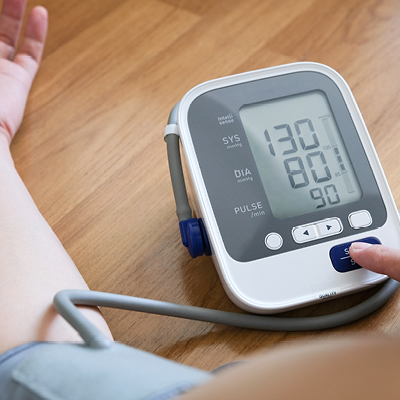Vitality eNews Sign Up
Receive the Summa Health eNewsletter for the latest health tips, advice and updates.
A Guide To High Blood Pressure To Help You Lower Your Numbers
Posted May 23, 2022 by Joseph F. Pietrolungo DO, MS, FSVM, FACC

There’s good reason why blood pressure readings are taken first at all routine doctor visits. Almost half of American adults have high blood pressure, known as hypertension, according to the American Heart Association. It’s a very common condition, especially as you age.
Your blood pressure is determined both by the amount of blood your heart pumps and the amount of resistance to blood flow in your arteries. The more blood your heart pumps and the narrower your arteries, which creates increased resistance, the higher your blood pressure.
Blood pressure readings are measured using two numbers. The top number (systolic pressure) measures the amount of pressure in your arteries when your heart beats. The bottom number (diastolic pressure) measures the amount of pressure in your arteries between heartbeats when the heart is at rest.
There are five categories for blood pressure readings:
- Healthy: Less than 120 over 80
- Elevated: When the top number is between 120 to 129 and the bottom number is less than 80
- Stage 1 hypertension: When the top number is between 130 to 139 and the bottom number is between 80 and 89
- Stage 2 hypertension: When the top number is 140 or higher and the bottom number is 90 or higher
- Hypertensive crisis: When the top number is over 180 and the bottom number is over 120, immediate medical attention is required.
The higher your blood pressure and the longer it goes uncontrolled, the greater the damage. High blood pressure causes excessive pressure on your artery walls and can damage the blood vessels, leading to an increased risk of heart attack or stroke, an aneurysm and even damage your brain, heart, eyes and kidneys.
Your blood pressure should top your priority list because it’s the best indicator of how well your heart is functioning. Know your risk factors, get it checked regularly and identify steps to prevent or control it if you do develop high blood pressure. With proper treatment and management, you can control your high blood pressure — possibly even reverse it — to help you live a long and healthy life.
Symptoms of high blood pressure
High blood pressure is often known as the silent killer because there are virtually no obvious symptoms. The best way to know your blood pressure is to have it checked regularly by a doctor, especially if you’re over 40 or at high risk for the condition.
For some patients when high blood pressure reaches a severe or life-threatening stage, symptoms can include:
- Dizziness
- Shortness of breath
- Blood spots in the eyes
- Headache
Risk factors for high blood pressure
The risk of high blood pressure increases with age, but family history, obesity, sedentary lifestyles, poor diet, smoking and heavy alcohol use, and chronic stress can all be contributing factors that increase your risk, as well.
Certain chronic conditions, such as kidney disease, diabetes and especially sleep apnea, and even pregnancy also can increase your risk.
Preventing and managing high blood pressure
Because your blood pressure can vary during the day based on activity, your doctor will likely take several readings at separate appointments before diagnosing you with high blood pressure.
If you are diagnosed with high blood pressure, treatment includes both healthy lifestyle changes and prescription medication.
Lifestyle changes can be very effective in preventing, controlling and, in some cases, even reversing, high blood pressure. Your doctor will likely start by recommending the following healthy habits:
- Eating a heart-healthy diet, which includes fruits, vegetables and lean proteins, limiting saturated fats and reducing sodium intake
- Getting regular exercise (at least 150 minutes of moderate physical activity weekly)
- Maintaining a healthy weight
- Quitting smoking and limiting alcohol consumption
- Reducing stress and getting adequate sleep and treating any sleep apnea that may be present
Sometimes, lifestyle changes aren’t enough to lower blood pressure and medications may be prescribed, depending on the type and severity of your condition.
Your doctor likely will start you on a diuretic to help eliminate sodium and excess fluid from your body, which can cause high blood pressure. In addition, your provider may add other medications to help prevent your arteries from tightening or narrowing or drugs that slow your heartbeat altogether to reduce the amount of blood that is pumped through your arteries.
There are many blood pressure drugs available and your doctor may need to try a few different ones until one or a combination of drugs work best for you.
But, the important first step is identifying the problem. The sooner you can get your high blood pressure diagnosed, the sooner it can be managed — or better yet, reversed.

